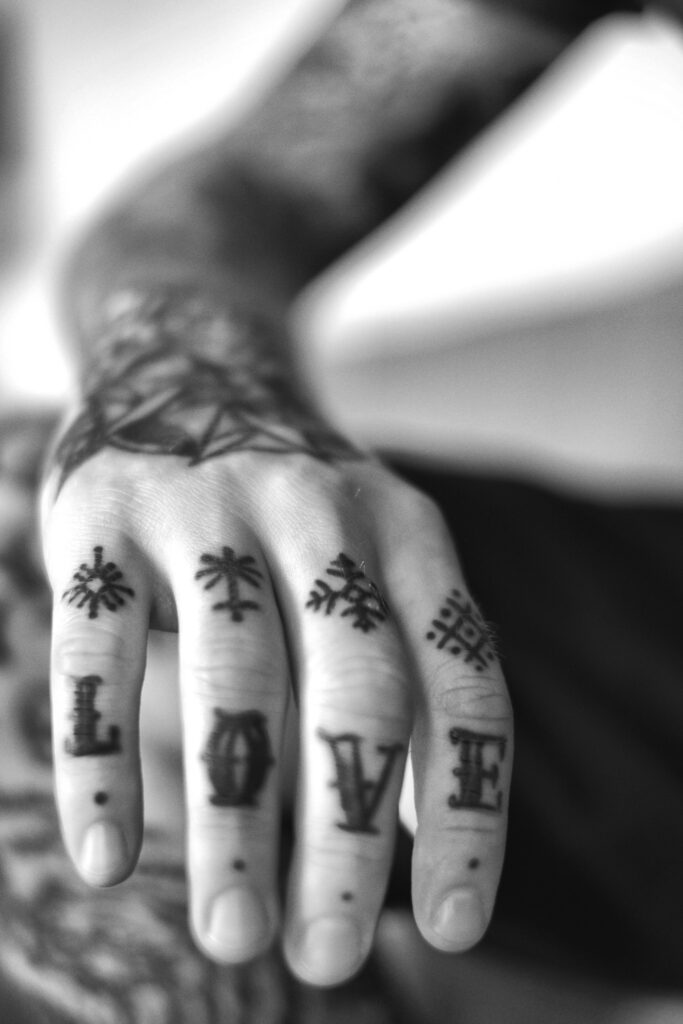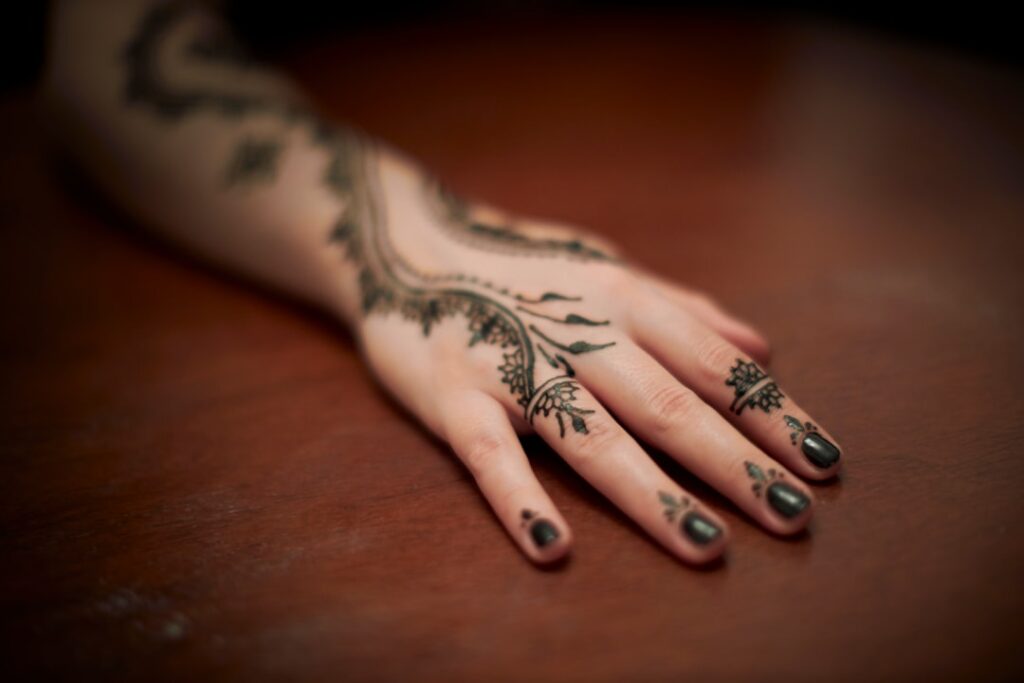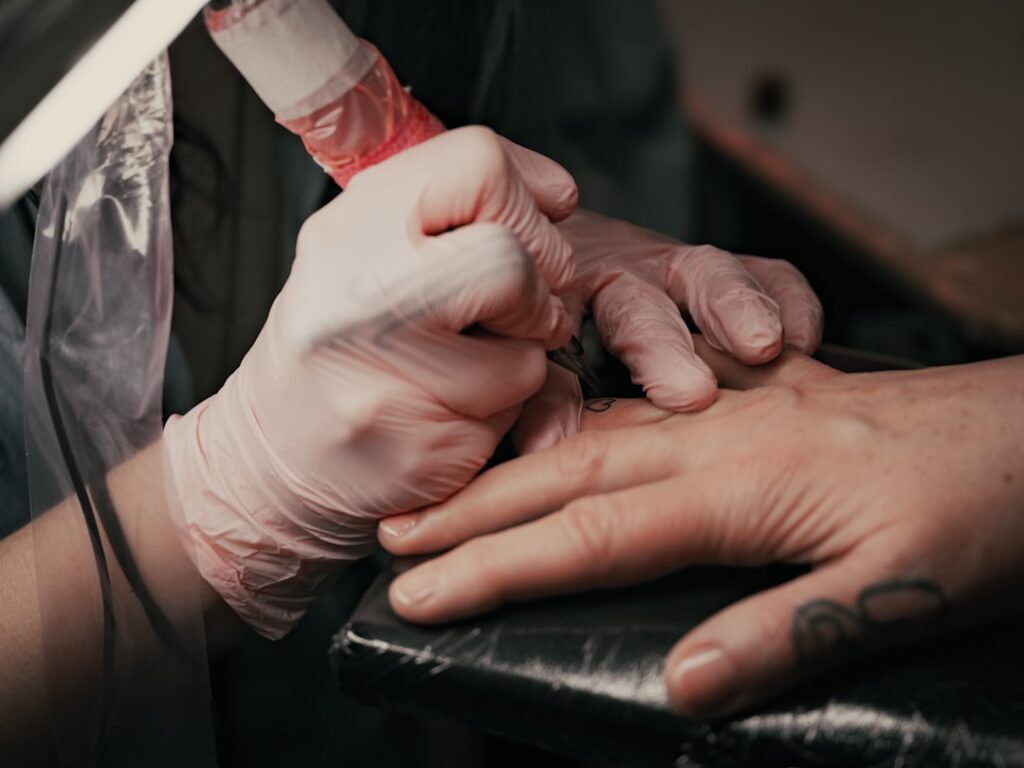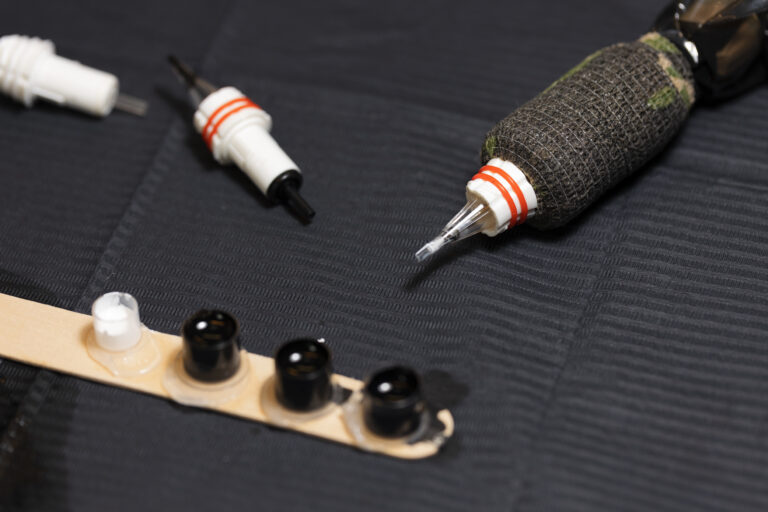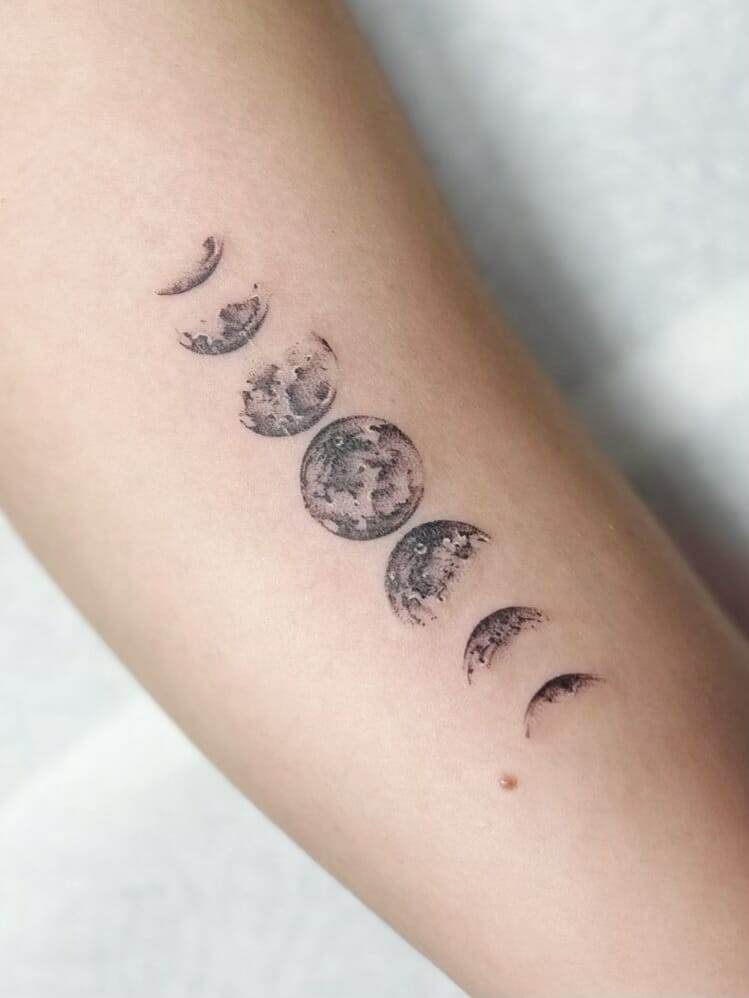Hand and finger tattoos have gained significant popularity in recent years, becoming a prominent form of self-expression for many individuals. These tattoos, often small and intricate, can convey deep personal meanings or simply serve as aesthetic embellishments. The visibility of hand and finger tattoos makes them particularly striking, as they are often on display in everyday life.
Unlike tattoos placed in more concealed areas, hand and finger tattoos invite curiosity and conversation, allowing wearers to share their stories or artistic choices with others. The appeal of hand and finger tattoos lies not only in their visual impact but also in their cultural significance. Throughout history, various cultures have used tattoos as a means of marking identity, status, or belonging.
In contemporary society, these tattoos can symbolize individuality and personal narratives. As more people embrace body art as a form of self-identity, hand and finger tattoos have emerged as a canvas for creativity and personal expression, reflecting the diverse stories and experiences of those who choose to adorn their skin in this way.
Key Takeaways
- Hand and finger tattoos are a popular form of body art that require special care and consideration due to their unique placement and visibility.
- Hand and finger tattoos are generally less durable than tattoos on other parts of the body due to the frequent movement and exposure to elements.
- Factors such as skin type, tattoo placement, and aftercare practices can significantly impact the longevity of hand and finger tattoos.
- Proper care, including regular moisturizing and sun protection, is essential for maintaining the vibrancy and integrity of hand and finger tattoos.
- Hand and finger tattoos come with potential risks, such as fading, blurring, and difficulty in covering up, and should be carefully considered before getting inked.
Durability of Hand and Finger Tattoos
When considering a tattoo, one of the most critical aspects is its durability. Hand and finger tattoos are known to be less durable than tattoos placed on other parts of the body. This is primarily due to the high level of movement and friction these areas experience daily.
The skin on the hands and fingers is constantly exposed to various elements, including sunlight, water, and physical abrasion, all of which can contribute to the fading and blurring of tattoo ink over time. Moreover, the skin on the hands and fingers is thinner compared to other areas, which can affect how well the ink holds. While some individuals may find that their hand and finger tattoos remain vibrant for years, others may notice a quicker deterioration.
This variability can be attributed to individual skin types, lifestyle choices, and the quality of the tattooing process itself. Therefore, potential tattoo enthusiasts should weigh these factors carefully when considering a hand or finger tattoo.
Factors Affecting the Longevity of Hand and Finger Tattoos
Several factors play a crucial role in determining the longevity of hand and finger tattoos. One significant factor is the technique used by the tattoo artist. A skilled artist will understand how to apply ink effectively in these challenging areas, ensuring that it adheres well to the skin.
The choice of ink also matters; high-quality inks are more likely to withstand the test of time compared to lower-quality alternatives. Therefore, selecting an experienced artist who specializes in hand and finger tattoos is essential for achieving a lasting result. Another important consideration is aftercare.
Proper care immediately following the tattooing process can significantly influence its longevity. Keeping the tattoo clean and moisturized helps prevent infection and promotes healing, which can ultimately affect how well the ink settles into the skin. Additionally, ongoing care is vital; using sunscreen on exposed tattoos can protect them from UV damage that leads to fading.
Lifestyle choices such as frequent hand washing or exposure to harsh chemicals can also impact how long a tattoo remains vibrant.
Care Tips for Hand and Finger Tattoos
Caring for hand and finger tattoos requires diligence and attention to detail. After getting a tattoo in these areas, it is crucial to follow your artist’s aftercare instructions closely. Typically, this includes keeping the tattoo covered for a few days to protect it from bacteria and irritation.
Once the initial healing period is over, gently washing the area with mild soap and applying a fragrance-free moisturizer can help maintain skin health. Long-term care is equally important for preserving the appearance of hand and finger tattoos. Regularly applying sunscreen when exposed to sunlight can prevent fading caused by UV rays.
Additionally, avoiding harsh chemicals or excessive scrubbing during cleaning routines will help maintain the integrity of the tattoo. For those who frequently wash their hands or use hand sanitizers, opting for products that are gentle on the skin can minimize wear on the tattooed area.

Risks and Considerations for Hand and Finger Tattoos
While hand and finger tattoos can be beautiful expressions of art, they come with certain risks and considerations that potential wearers should keep in mind. One primary concern is visibility; because these tattoos are often in plain sight, they may impact professional opportunities or social perceptions. Some workplaces have strict policies regarding visible tattoos, which could lead to complications for individuals seeking employment or advancement in their careers.
Additionally, the healing process for hand and finger tattoos can be more complicated than for other areas due to constant movement. This movement can lead to issues such as scabbing or fading if not properly cared for during healing. Furthermore, individuals with certain skin conditions or sensitivities may find that tattoos in these areas are more prone to complications.
It is essential for anyone considering a hand or finger tattoo to weigh these risks against their desire for body art.

Popular Designs for Hand and Finger Tattoos
The world of hand and finger tattoos is rich with diverse designs that cater to various tastes and preferences. Popular motifs often include symbols that hold personal significance, such as initials, dates, or meaningful words. Minimalist designs have gained traction in recent years; simple lines or small geometric shapes can create an elegant yet understated look that resonates with many individuals.
Floral designs are also prevalent among hand and finger tattoos, offering a vibrant way to express femininity or appreciation for nature. Additionally, intricate mandalas or tribal patterns can create stunning visual effects that draw attention without overwhelming the senses. Ultimately, the choice of design should reflect personal style and meaning, making each tattoo unique to its wearer.
Cultural and Symbolic Significance of Hand and Finger Tattoos
Hand and finger tattoos carry rich cultural and symbolic significance across various societies throughout history. In many cultures, tattoos have been used as rites of passage or markers of identity. For instance, indigenous tribes often employed tattoos as symbols of bravery or accomplishments within their communities.
In modern contexts, hand and finger tattoos can symbolize individuality or rebellion against societal norms. Moreover, certain designs may hold specific meanings within different cultures. For example, some symbols may represent love, strength, or protection, while others might signify spiritual beliefs or connections to ancestry.
Understanding these cultural implications can enhance the appreciation of hand and finger tattoos as not just art but also as expressions of heritage and identity.
Conclusion and Final Thoughts on Hand and Finger Tattoos
In conclusion, hand and finger tattoos offer a unique avenue for self-expression that combines artistry with personal significance. While they present certain challenges regarding durability and care, their ability to convey deep meanings makes them an appealing choice for many individuals. As with any form of body art, it is essential to consider factors such as design choice, artist expertise, and long-term care when deciding on a hand or finger tattoo.
Ultimately, these tattoos serve as a canvas for creativity while reflecting individual stories and cultural backgrounds. Whether chosen for aesthetic reasons or deeper symbolic meanings, hand and finger tattoos continue to captivate those who appreciate the beauty of body art. As society evolves in its acceptance of tattoos as a legitimate form of expression, hand and finger tattoos will likely remain a popular choice among those looking to make a statement through their skin art.

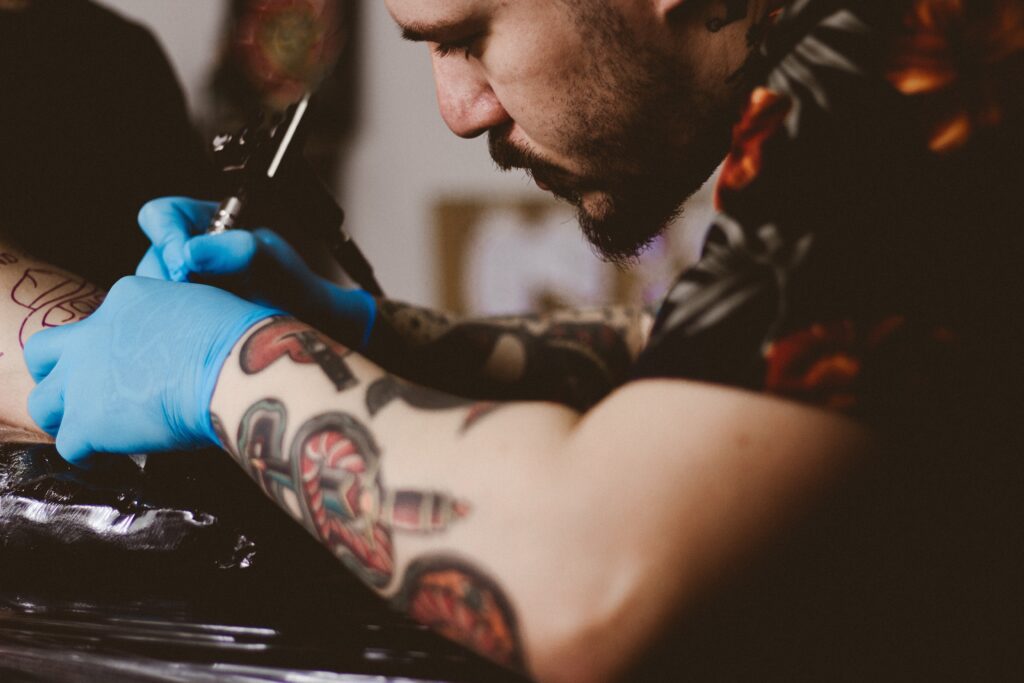
FAQs
What are the factors that affect the durability of hand and finger tattoos?
Factors that affect the durability of hand and finger tattoos include the quality of the ink used, the skill of the tattoo artist, the location of the tattoo on the hand or finger, and the individual’s skin type and lifestyle.
How long do hand and finger tattoos typically last?
Hand and finger tattoos tend to fade faster than tattoos on other parts of the body due to the constant exposure to friction and sunlight. They may need to be touched up more frequently, typically every 1-2 years, to maintain their appearance.
What are some tips for caring for hand and finger tattoos to prolong their durability?
To prolong the durability of hand and finger tattoos, it is important to keep them moisturized, protect them from sun exposure, avoid excessive friction, and follow the aftercare instructions provided by the tattoo artist. Regular touch-ups can also help maintain the appearance of the tattoos.
Are there specific designs or styles that are more durable for hand and finger tattoos?
Simple and bold designs tend to hold up better on the hands and fingers compared to intricate and detailed designs. Additionally, using darker colors and thicker lines can help improve the longevity of hand and finger tattoos.
What are the potential risks or complications of getting a hand or finger tattoo?
Hand and finger tattoos are more prone to fading, blurring, and spreading over time due to the nature of the skin in these areas. In addition, the hands and fingers are more susceptible to infection and slower healing, so it is important to choose a reputable and experienced tattoo artist and follow proper aftercare procedures.
